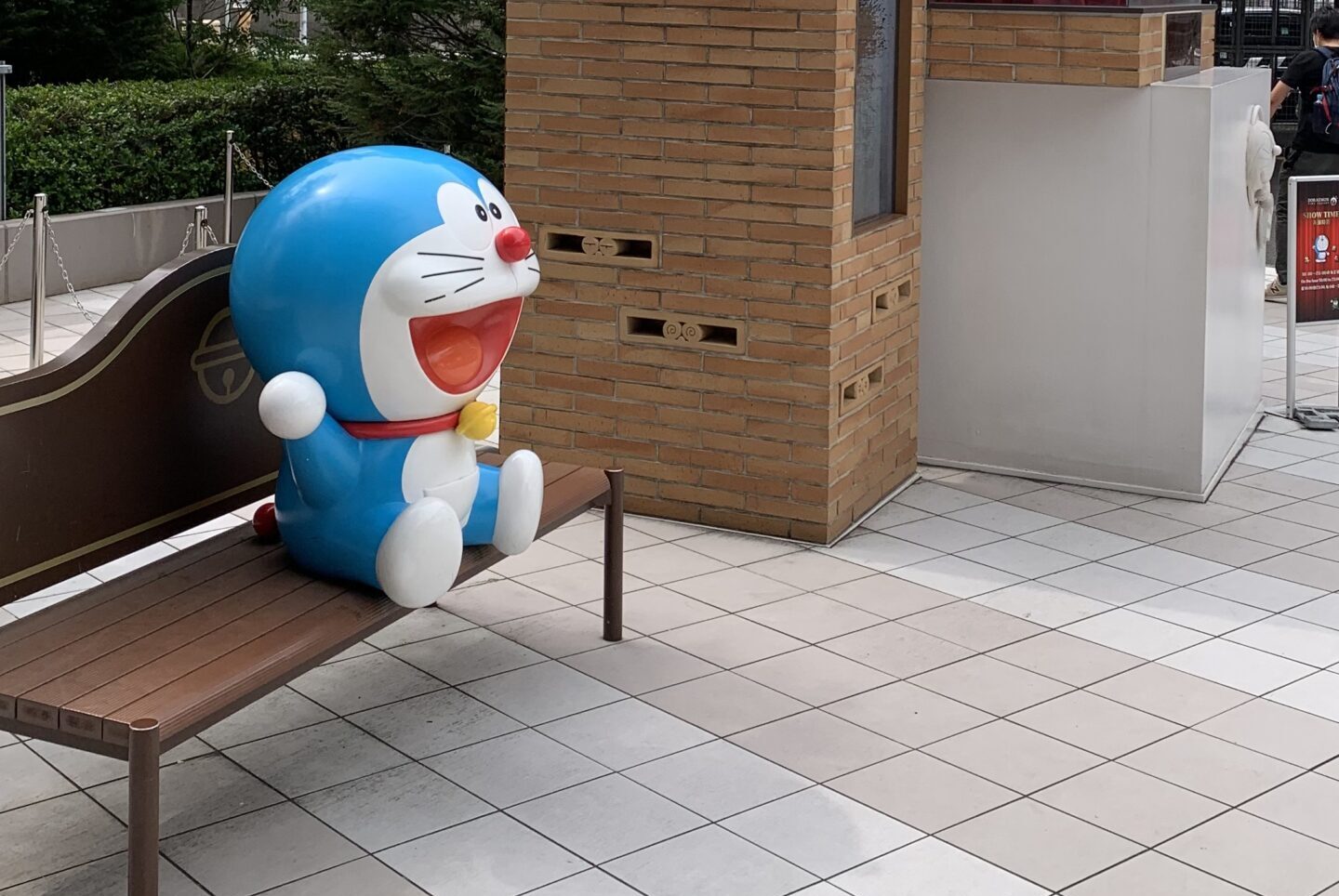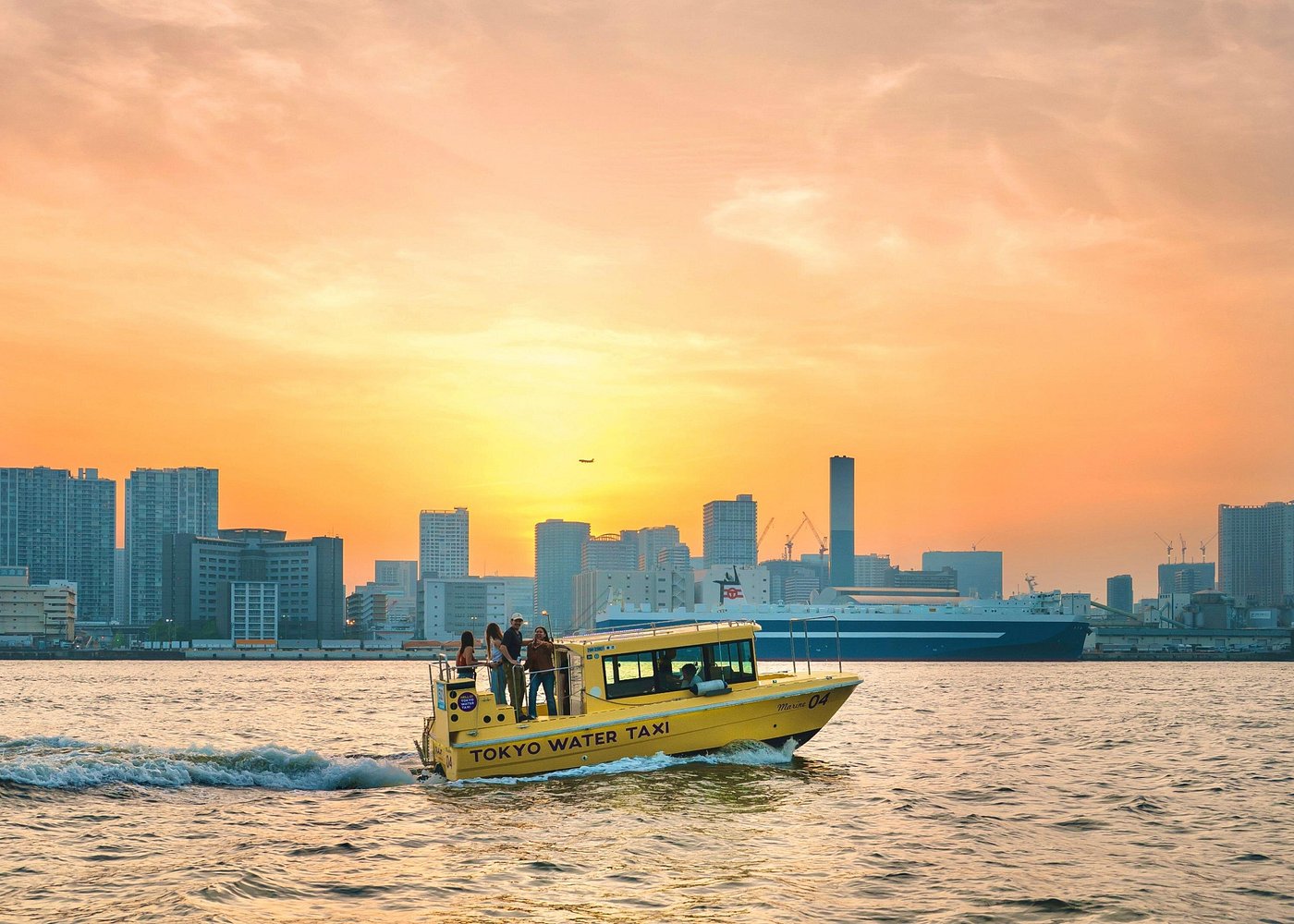
Tokyo’s a seaside city too. Sometimes, when I feel like taking a stroll by the ocean, I head to Odaiba Seaside Park.
The view around here, with everything looking so artificial, might just match the image of Japan that a lot of people still have. There’s a life-sized Gundam that fans of Japanese anime will totally love, a replica of the Statue of Liberty, and buildings that look like they’re straight out of a sci-fi movie.
If you come to Tokyo, you gotta check it out at least once.

A. Start Walking from Odaiba-Kaihinkoen Station
If you’re visiting from around Tokyo Station Area or Ginza Area, taking the Yurikamome Line from JR Shimbashi Station on the Yamanote Line to Odaiba-Kaihinkoen Station (marked as A on the map) is convenient. In addition, the view of Tokyo Bay from the Yurikamome Line as it travels over the water is highly recommended.
If you’re coming from Shinjuku Area, you can take the Saikyo Line from JR Shinjuku Station, board a train bound for Shin-Kiba, and get off at Tokyo Teleport Station (marked as ❶ on the map), which is convenient.
When you get off the station, you’ll see a futuristic building like in the photo—it’s the Fuji Television headquarters (marked as ❷ on the map). The spherical part at the top of the building is an observation deck that you can visit. If you have time, it might be worth checking out. Inside the building, they sometimes hold events related to TV programs, so you might catch a glimpse of Japanese television programming!
B. Encountering a Life-Sized Gundam and Doraemon – DiverCity Tokyo Plaza
When you visit Odaiba Seaside Park, the first thing you should do is check out the life-sized Gundam statue! Whether you’re an adult who was obsessed with Gundam as a kid, a young person who loves it now, or just someone looking for a fun photo chance, head to the plaza in front of DiverCity Tokyo (marked as B on the map)!
If you’re looking for Gundam-related merchandise, head to the Gundam Base Tokyo Annex located behind the Gundam statue. For an even bigger selection, visit the main Gundam Base Tokyo on the seventh floor!

Let’s take a picture with Doraemon!
If you want to take a picture with Doraemon, Nobita, and Shizuka, head to the back of DiverCity Tokyo. There’s a bench that looks just like the one in the show, so you might get a fun photo!

On the 2nd floor of DiverCity Tokyo, you’ll find Draeman Future Department Store, which sells Doraemon merchandise. It could be a great idea to look for some Doraemon goodies as a souvenir!

Tokyo Gourmet Stadium – Hot Food Court
On the 2nd floor of DiverCity Tokyo, you’ll find Tokyo Gourmet Stadium, a large and hot food court, as well. It’s a great spot to easily try some Japanese food and take a little break!


C. Statue of Liberty – Why is it located in a place like this?
In Odaiba Seaside Park, there’s a Statue of Liberty (marked as C on the map). With the sea and Rainbow Bridge in the background, it kind of gives off a vibe of real America, doesn’t it?
It’s a scaled-down version, about one-seventh the size of the original, built in 1998 as a temporary monument to commemorate the friendship between Japan and France. Due to its overwhelming popularity, it became a permanent fixture in 2000. Even today, it’s so popular that lines often form for photos in front of the statue.
D. Odaiba Seaside Park Pier – From Asakusa, you can take the water bus!
If you walk along the coast from the Statue of Liberty, you’ll find the (Odaiba Seaside Park) water bus pier (marked as D on the map). If you’re coming from Asakusa Area to Odaiba, taking the water bus could be a great way to travel back and forth. There are different types of boats available, and the route around Tokyo Bay and the Sumida River offers a unique perspective of Tokyo that you can’t get from land.


E. Let’s take a leisurely stroll along the Odaiba Seaside Park
Odaiba Seaside Park (marked as E on the map) features an approximately 800-meter-long artificial sandy beach, where various events are held and marine sports like windsurfing are enjoyed.
While clam digging is allowed on the beach, fishing and swimming are prohibited. Fishing is permitted in the adjacent Isohama area (Rocky Cost) to the west of the sandy beach.
Knowing that most of the scenery you see here is man-made, it feels like stepping onto the set of a sci-fi movie, doesn’t it? Still, taking a leisurely stroll along the coast is a pleasant way to spend time.
F. Taking a break at the DECKS Tokyo Beach
After a stroll along the beach, let’s take a break at DECKS Tokyo Beach (marked as F on the map). This seaside shopping complex has plenty of restaurants and cafes to choose from.

Daiba Itchome Shotengai on the 4th floor
If you have time, why not stop by Daiba Itchome Shotengai on the 4th floor? It’s a recreation of a Japanese shopping street from 50 years ago, filled with affordable and unique souvenirs like traditional snacks, toys, Japanese-style knick-knacks, and nostalgic games. Experience a touch of retro Japan instead of Cool Japan.

It’s filled with inexpensive snacks and toys, allowing you to indulge in the luxury of buying whatever you want, something you couldn’t do as a kid. Enjoy feeling like a mini-tycoon!


G. Battery Ruins – The historical site that gave Odaiba (Battery) its name
Walking along the sandy beach at Odaiba Seaside Park, you can see what looks like a green island (marked as G on the map) across the water. Much of this area is artificial, including the remains of a battery built over a hundred years ago. When you come to Odaiba, be sure to visit the historical site of the battery ruins, where Japan’s modern era began.
Until the mid-19th century, Japan adhered to a policy of seclusion, prohibiting foreign trade and the entry of foreigners. However, as large-scale industry flourished worldwide and Western nations sought resources and markets abroad, pressure mounted on Japan to abandon its isolationist policies. The United States, Russia, Britain, France, and others exerted significant pressure.
Initially, the Tokugawa government attempted to deter foreign ships by establishing coastal batteries, including one at Odaiba. However, as they came to understand the realities of the West, they realized the futility of using force to repel foreign ships, and these batteries ultimately never saw action. This marked Japan’s first encounter with the world on modern terms.

The photo shows the remains of the Third Battery, where you can also see the island where the Sixth Battery once stood. Six batteries were constructed, and to this day, remnants of two of these batteries can still be seen.
It’s easy to return from the same station that you arrived at, but if you came on the Saikyo Line from Shinjuku Area, it is recommended to return from Odaiba-Kaihinkoen Station (marked as A on the map) on the Yurikamome Line via Shinbashi. Another great option is to take a boat at Odaiba Seaside Park Pier (marked as D on the map) and return via Asakusa, which would also be enjoyable.
PR Explore Tokyo Bay
Guided Bay Cruise with Seagull Feeding or Sunset view presented by Viator;

Tokyo Bay used to be called the “Dead Sea” due to water pollution, but now it’s clean enough for water play and marine sport without issues. I dig Tokyo Bay too!
The view from here with multiple parallel highways, bridges soaring through the clouds connecting islands and river mouths—it’s like something out of a sci-fi movie. But apparently, the world is even bigger, with more amazing artificial landscapes popping up. I find myself wanting to cheer for Japan and say, ‘Go for it!’.
Lately, I’m feeling like a patriot!




